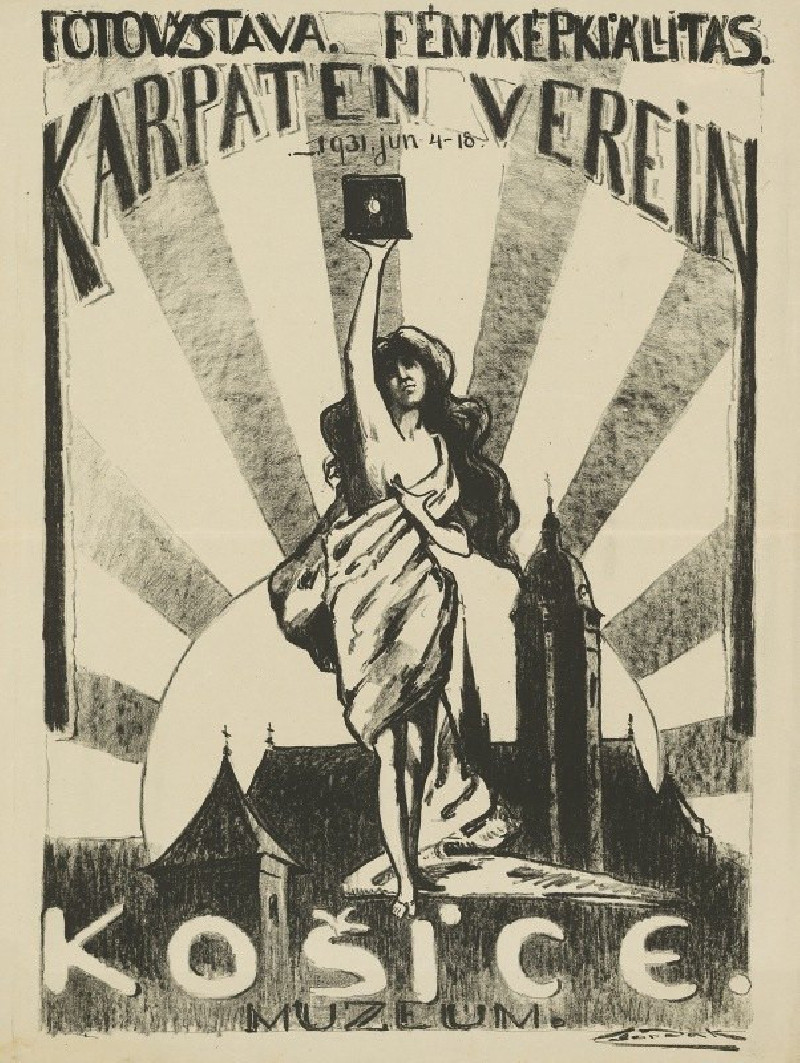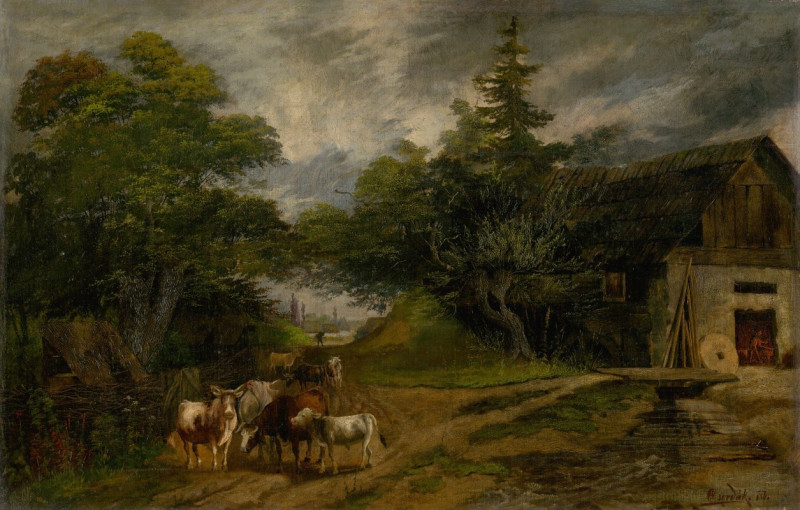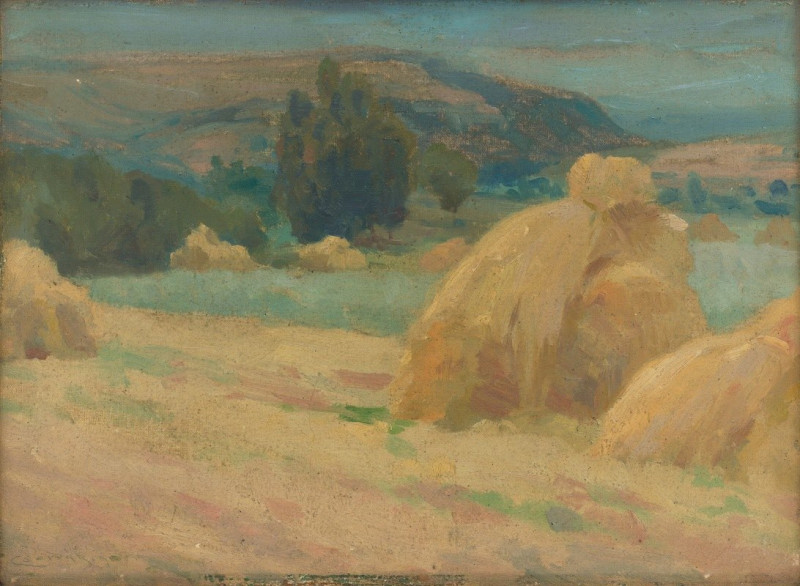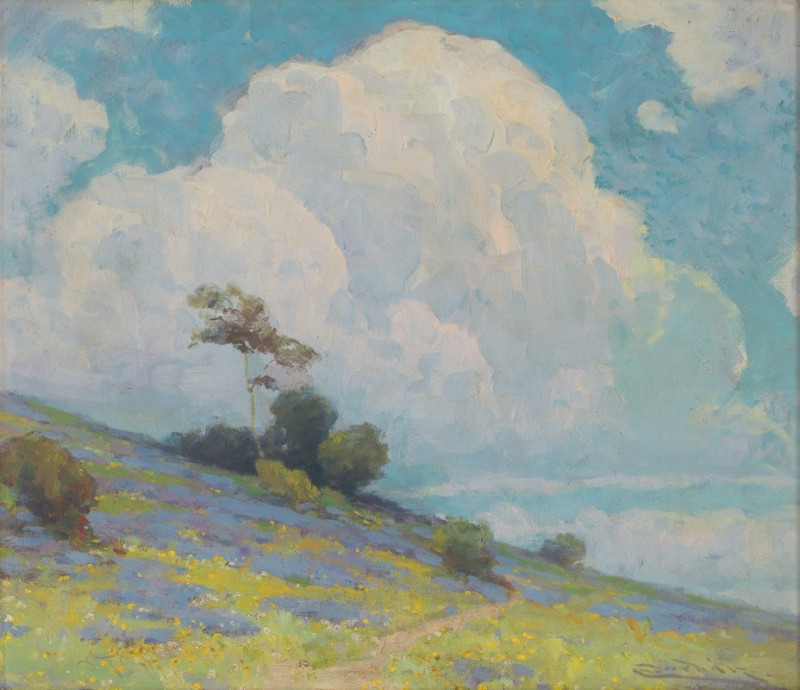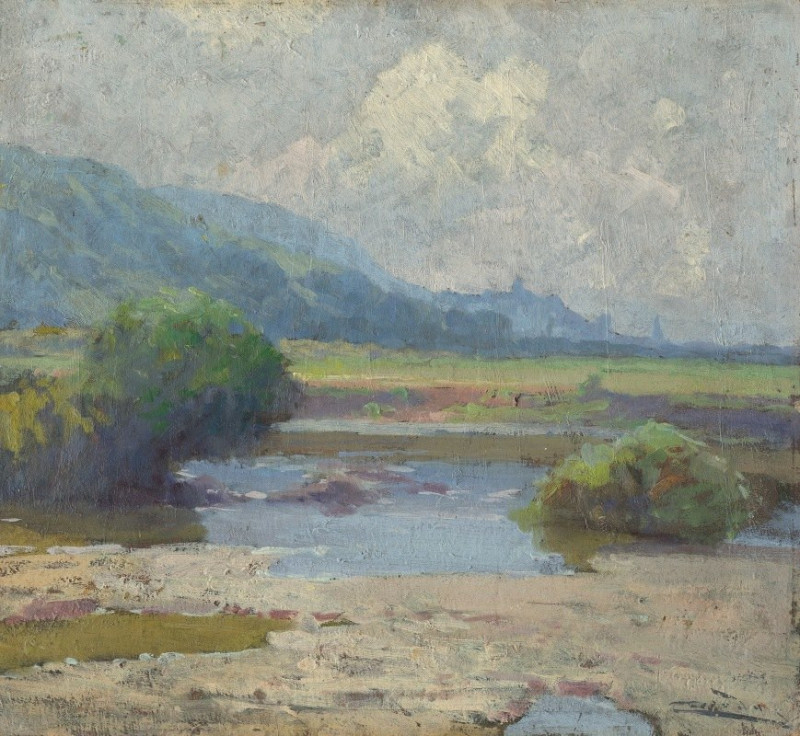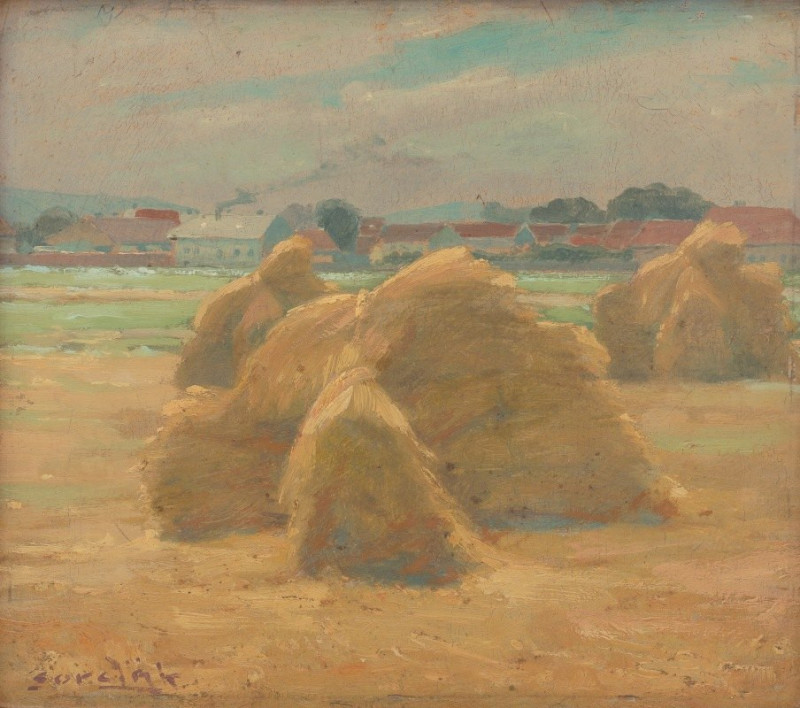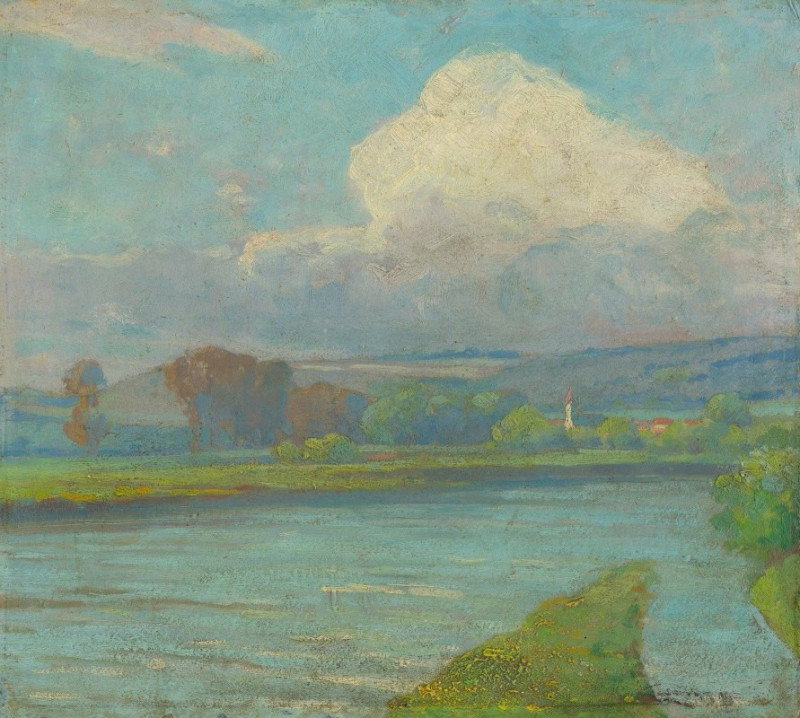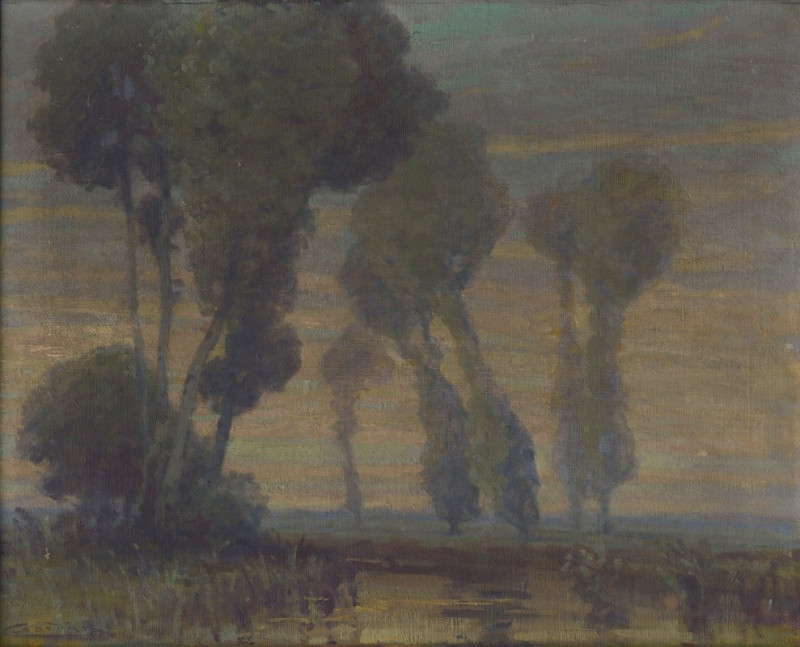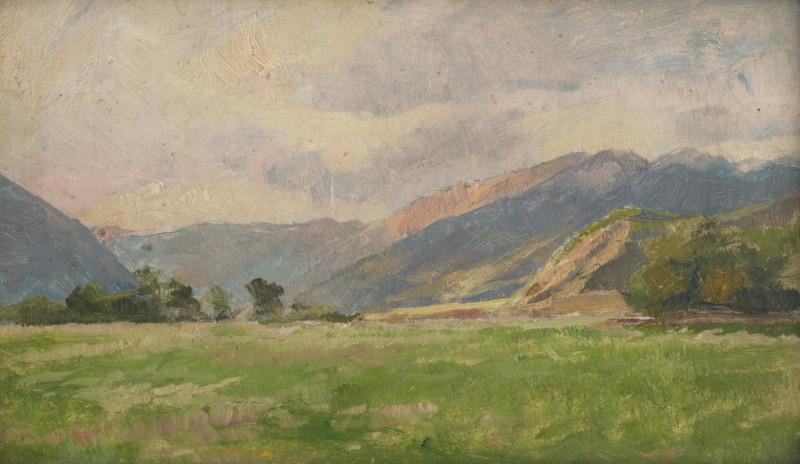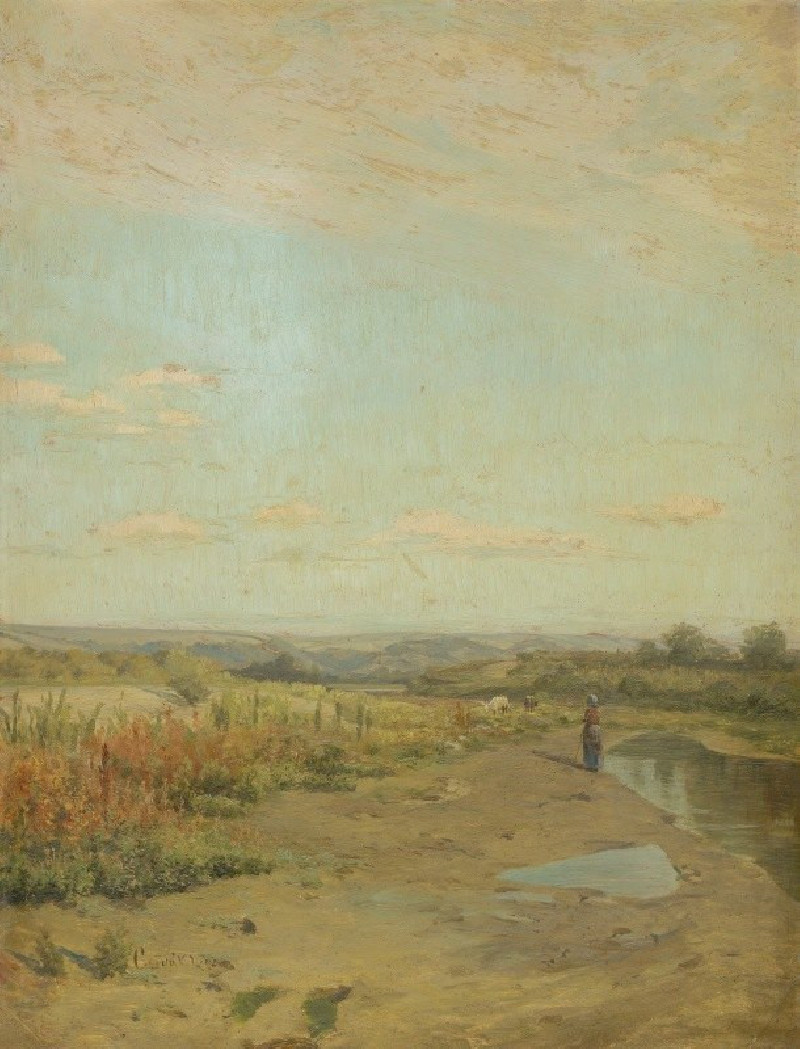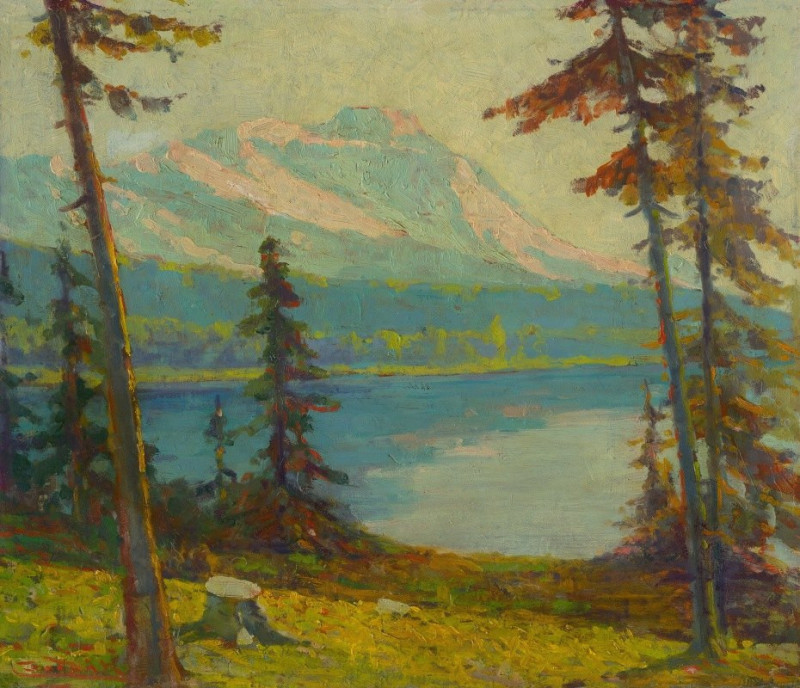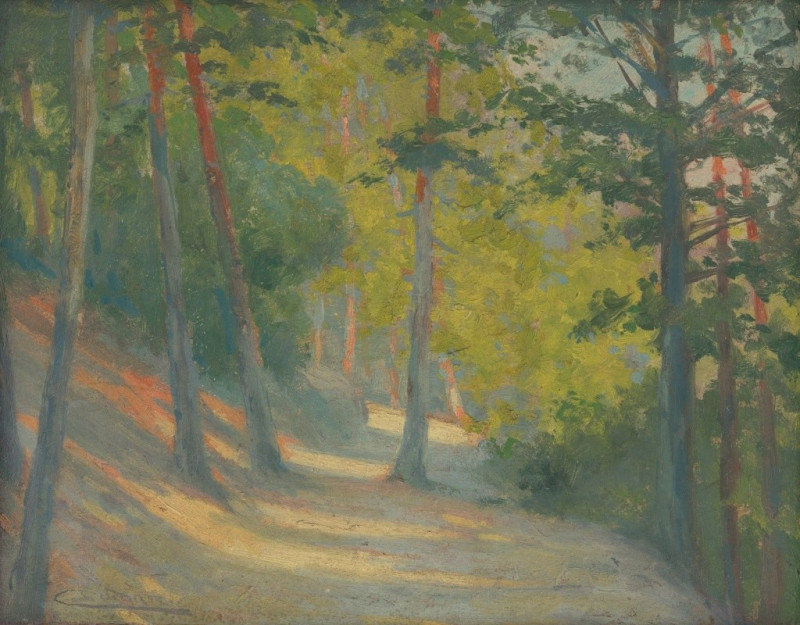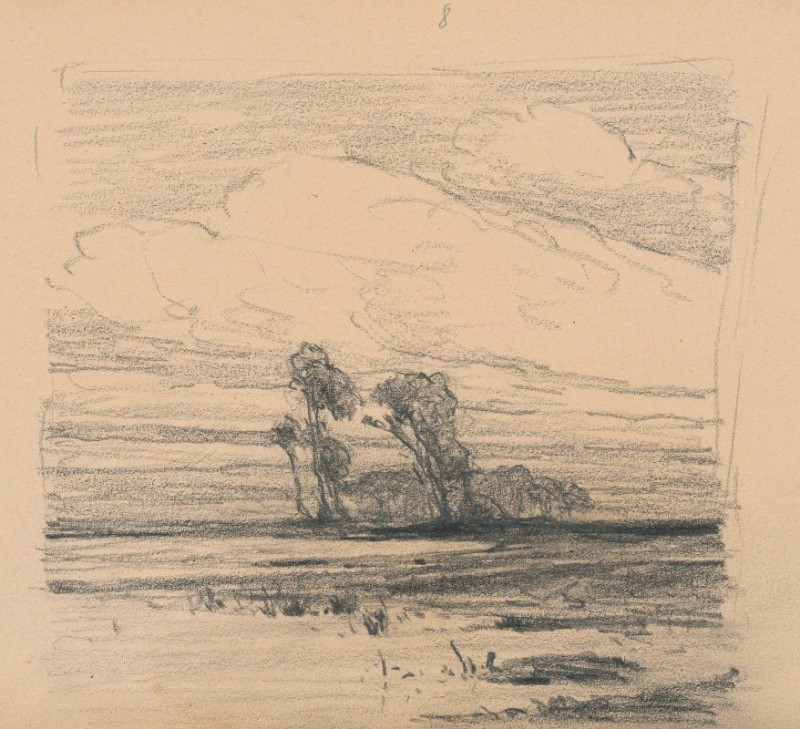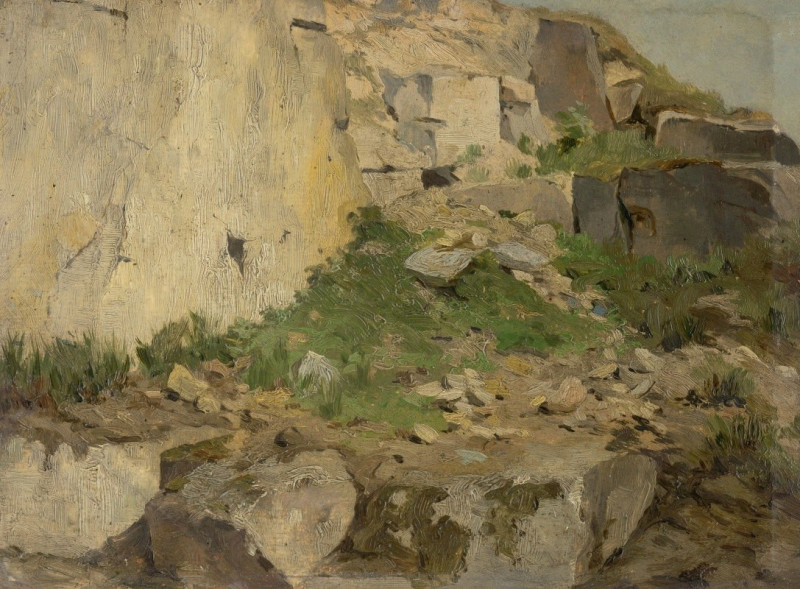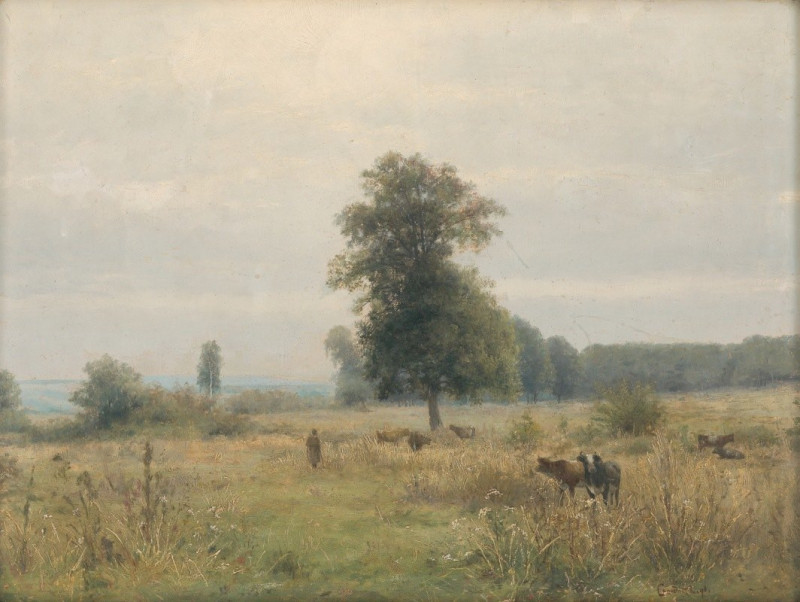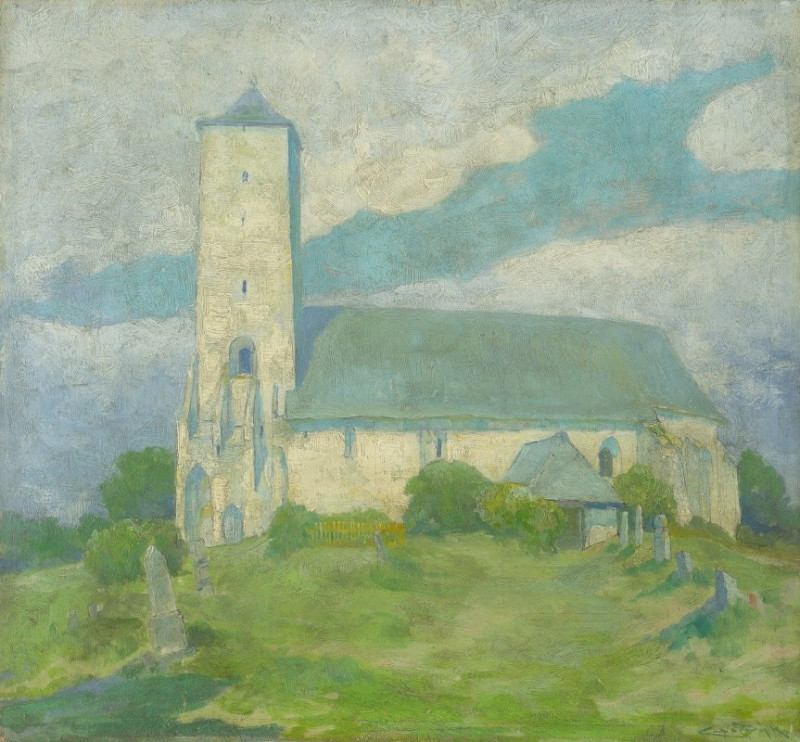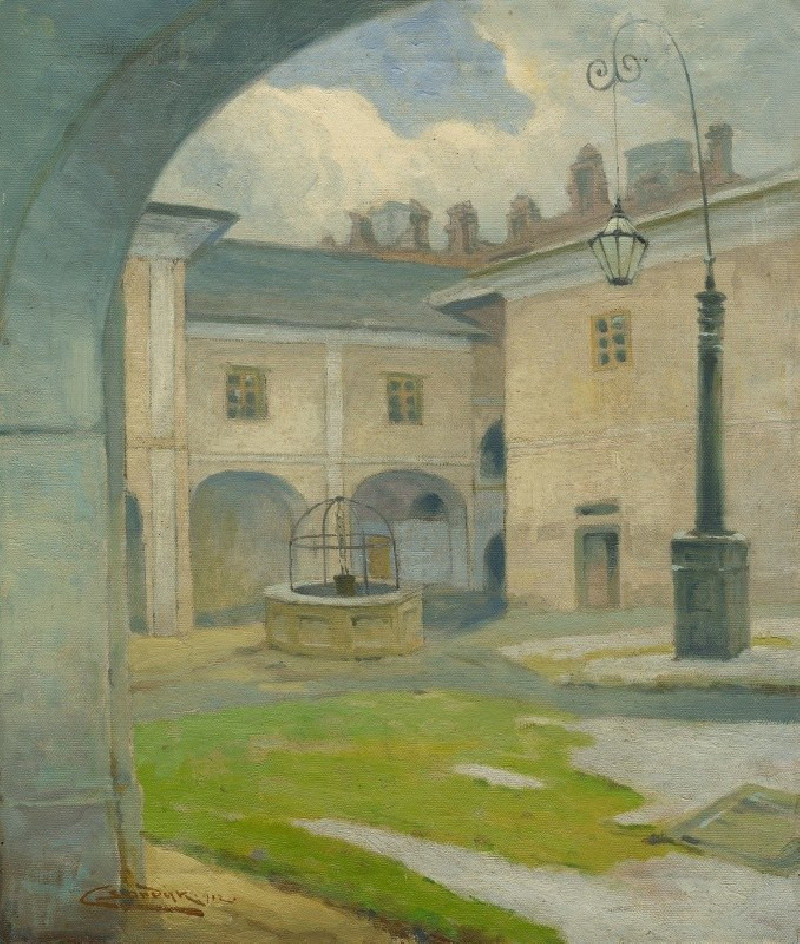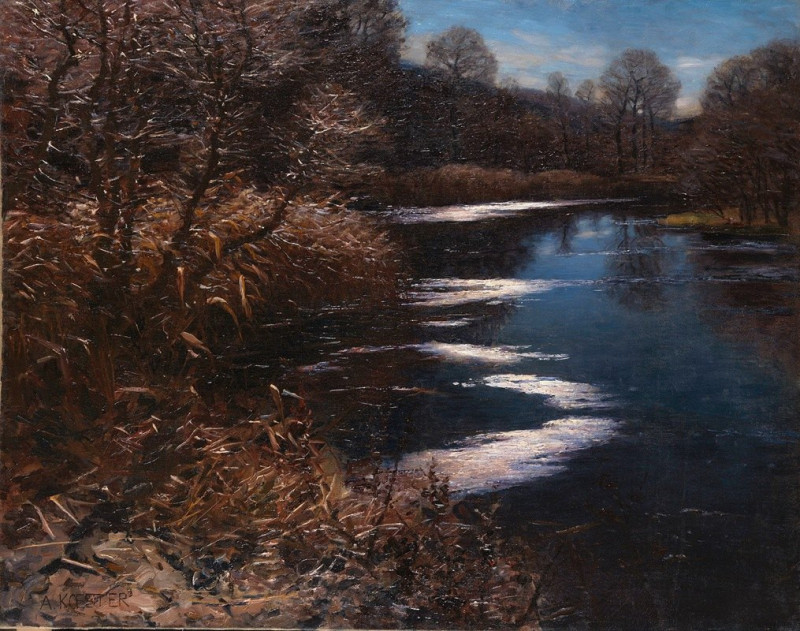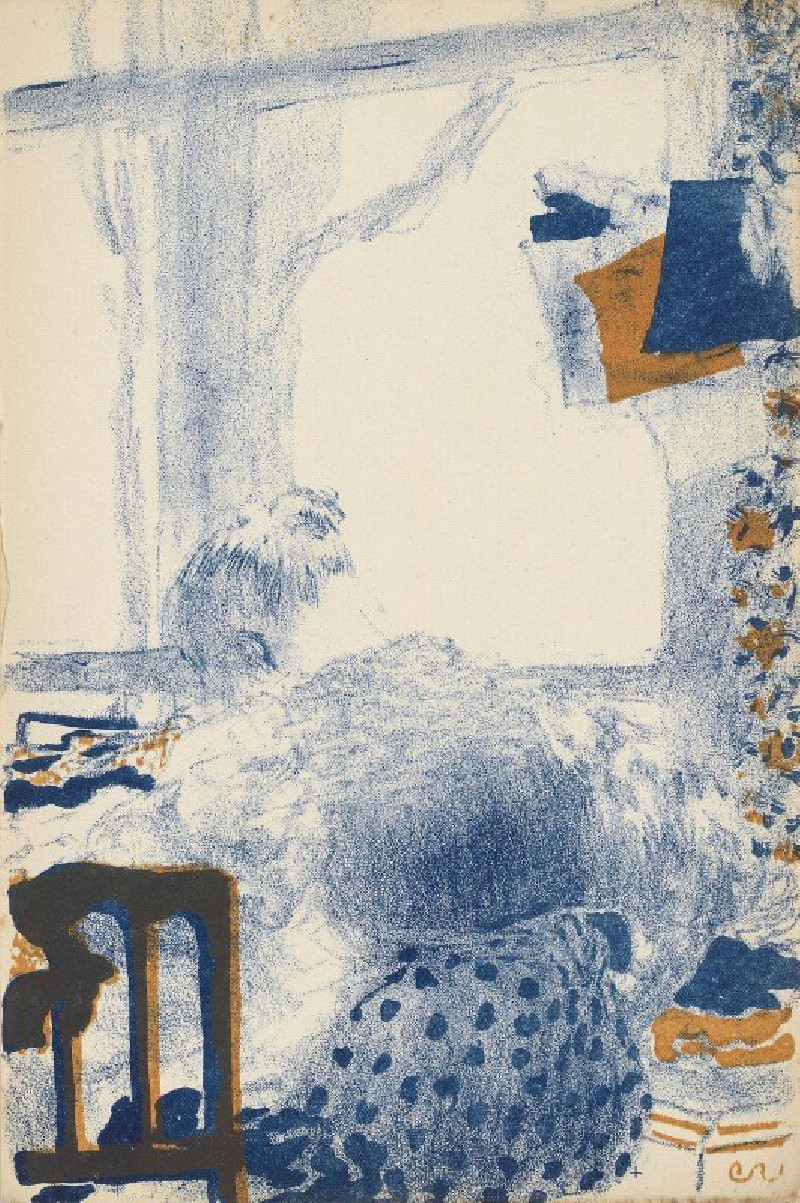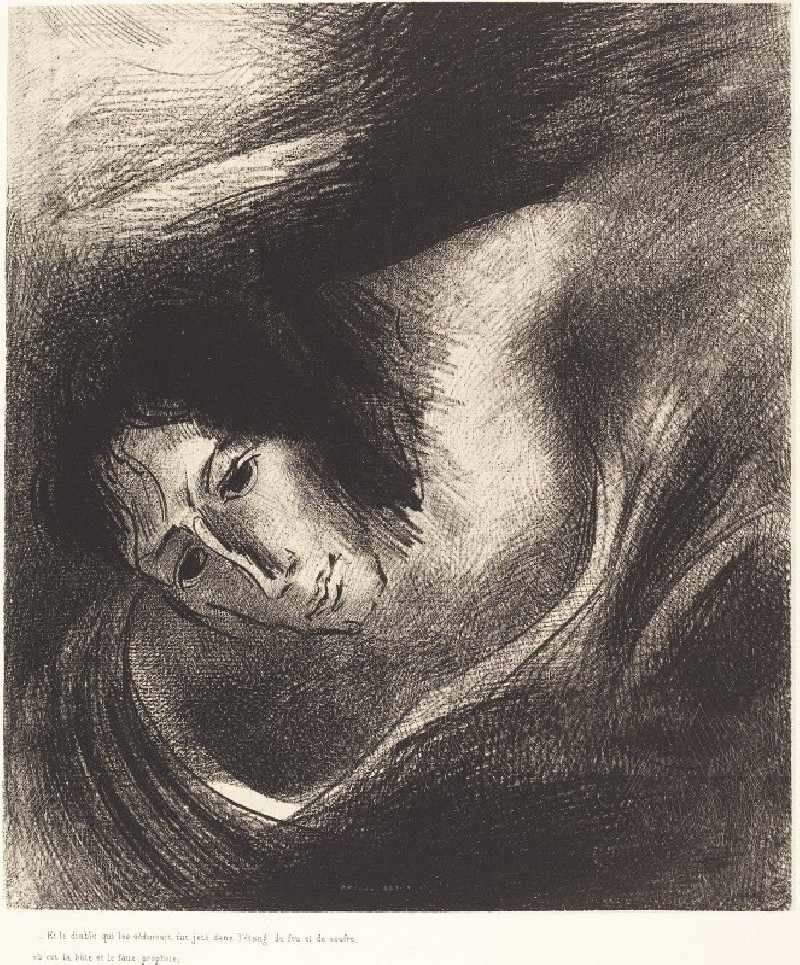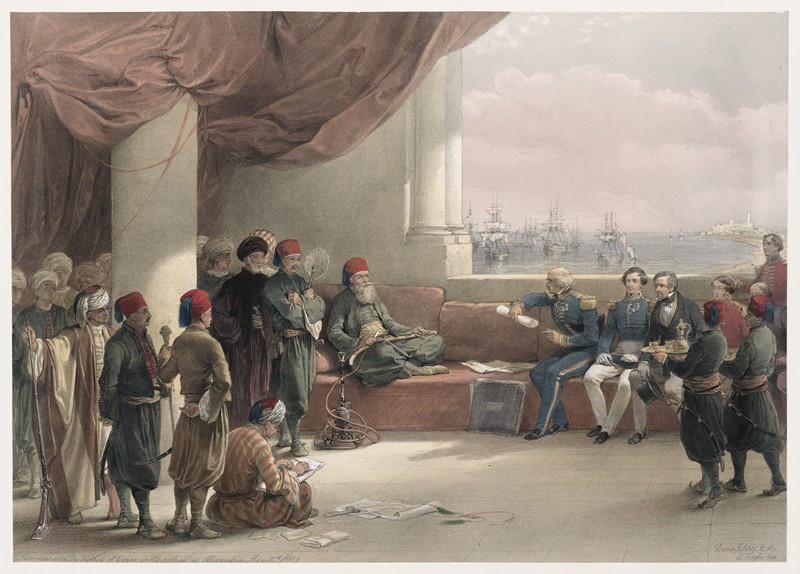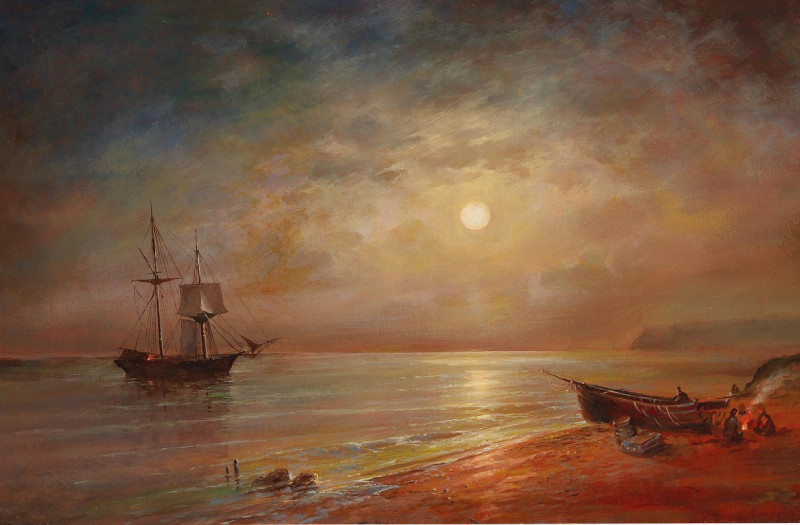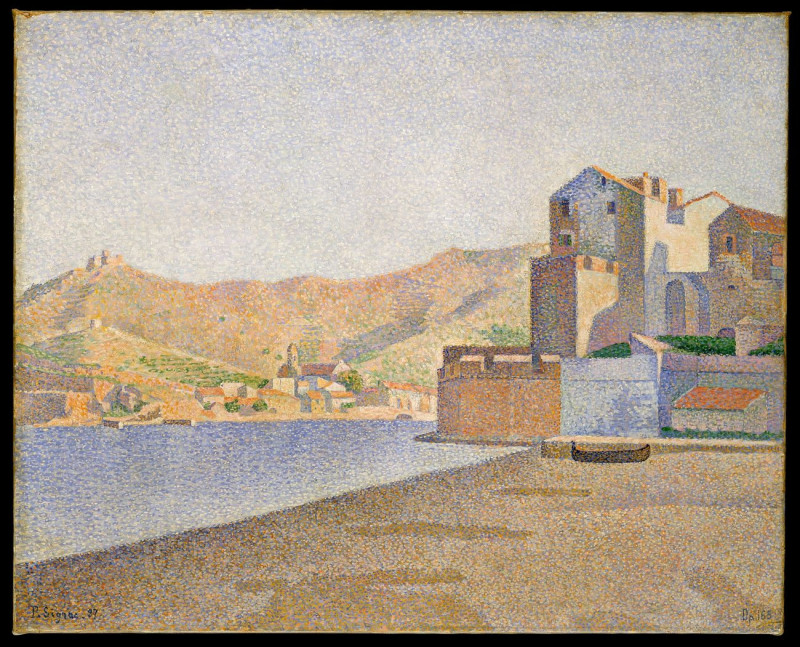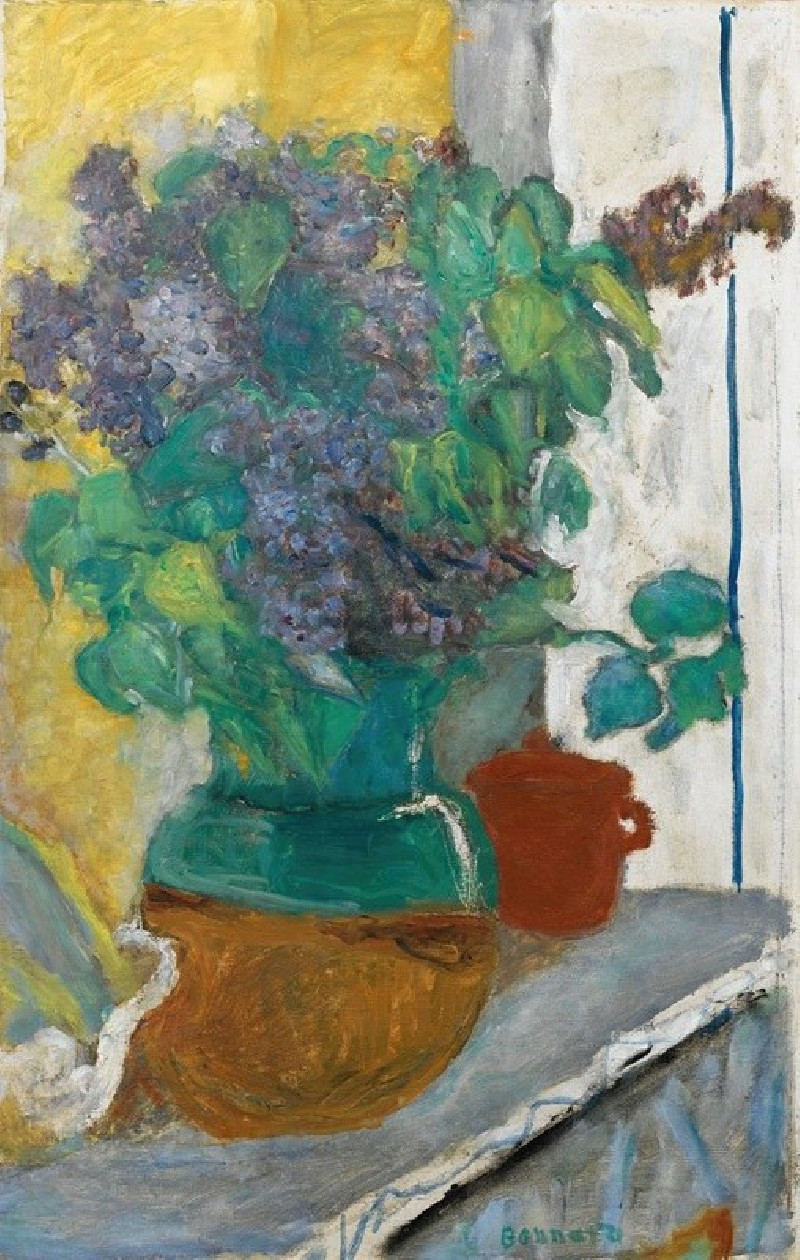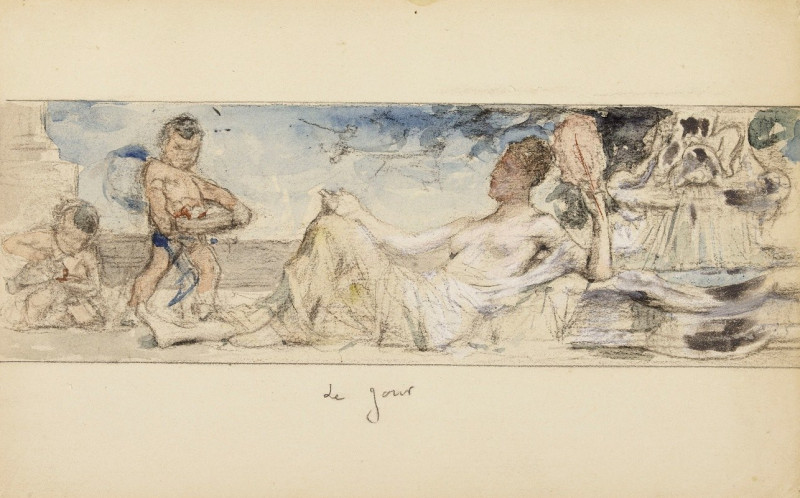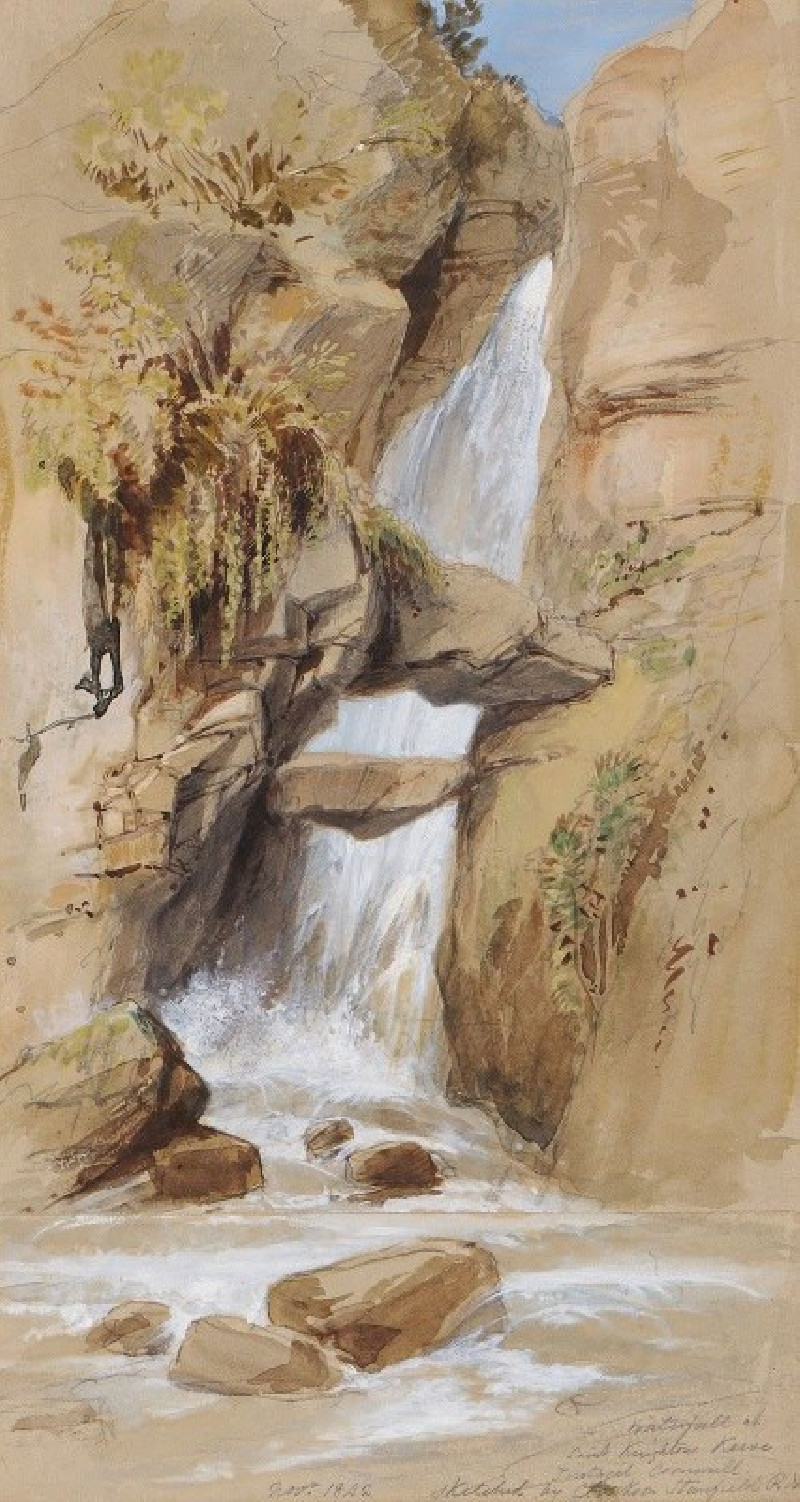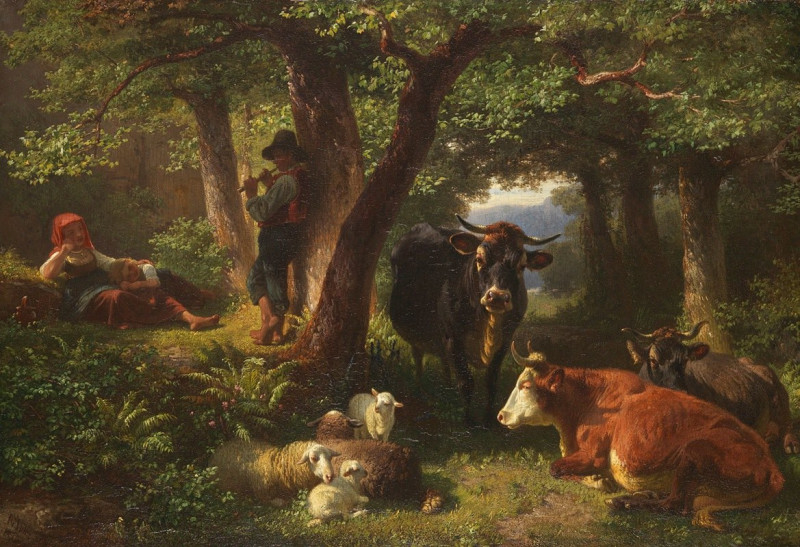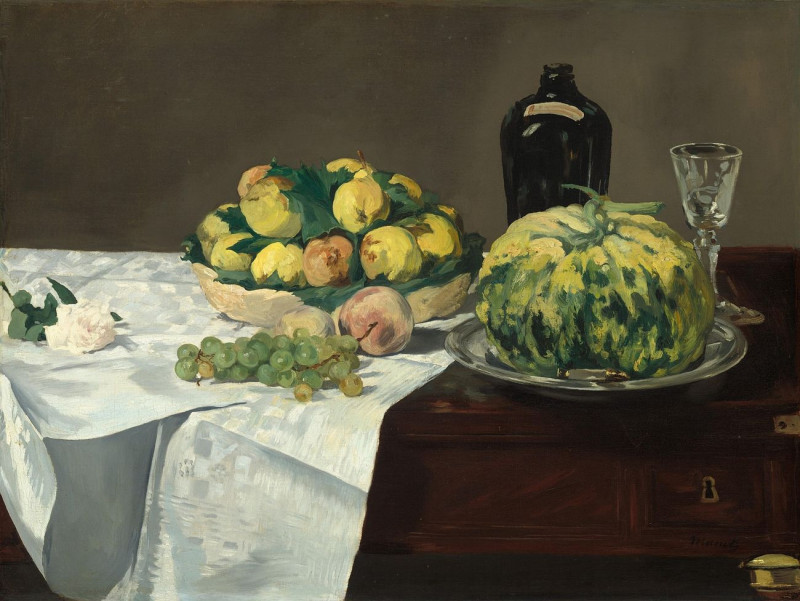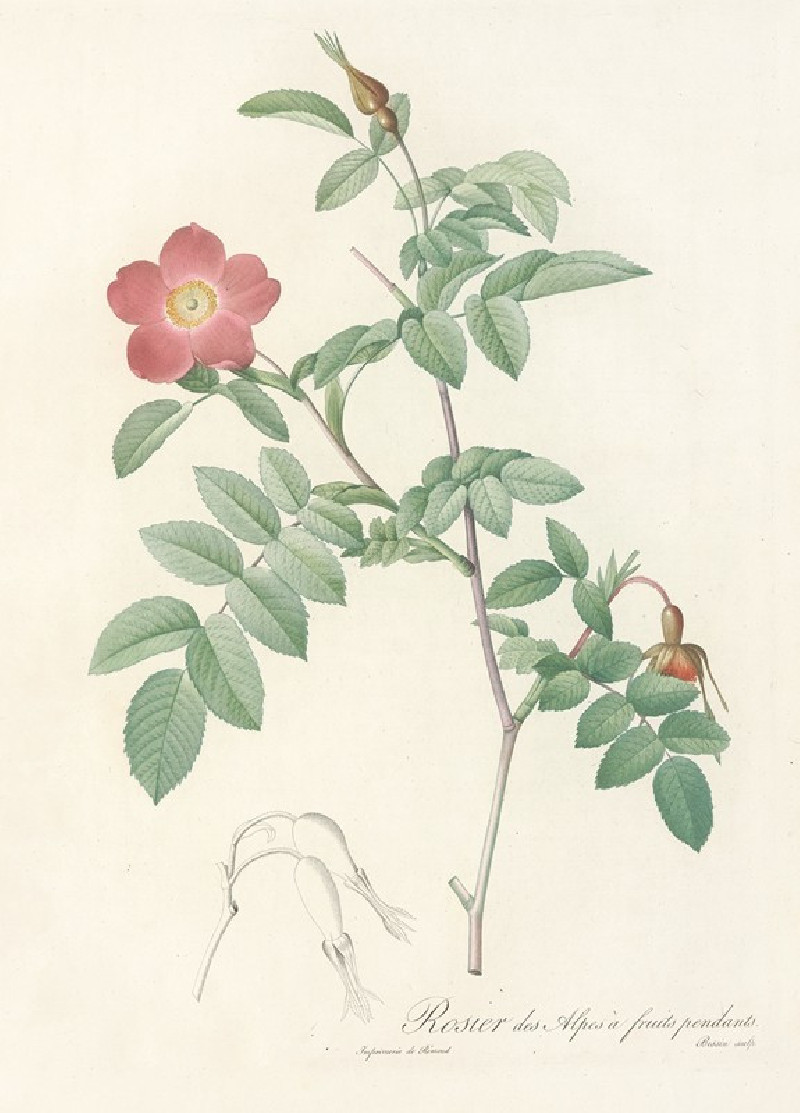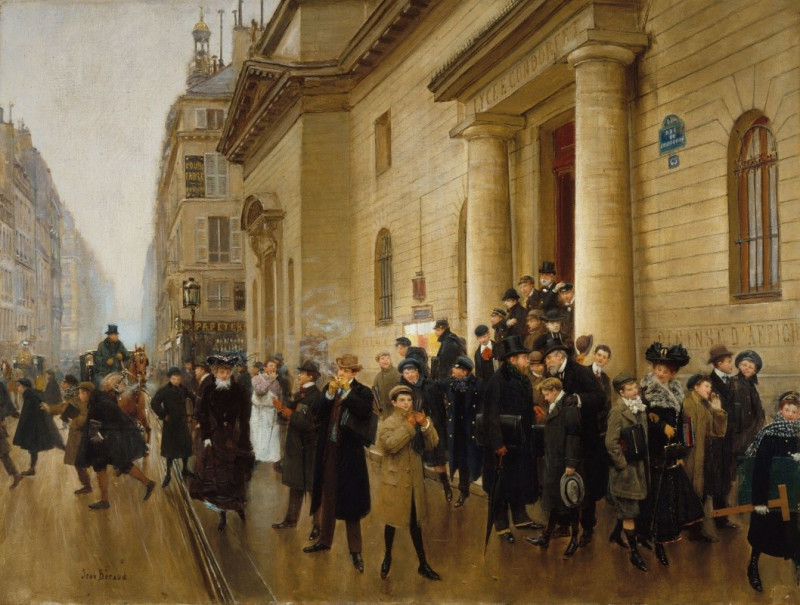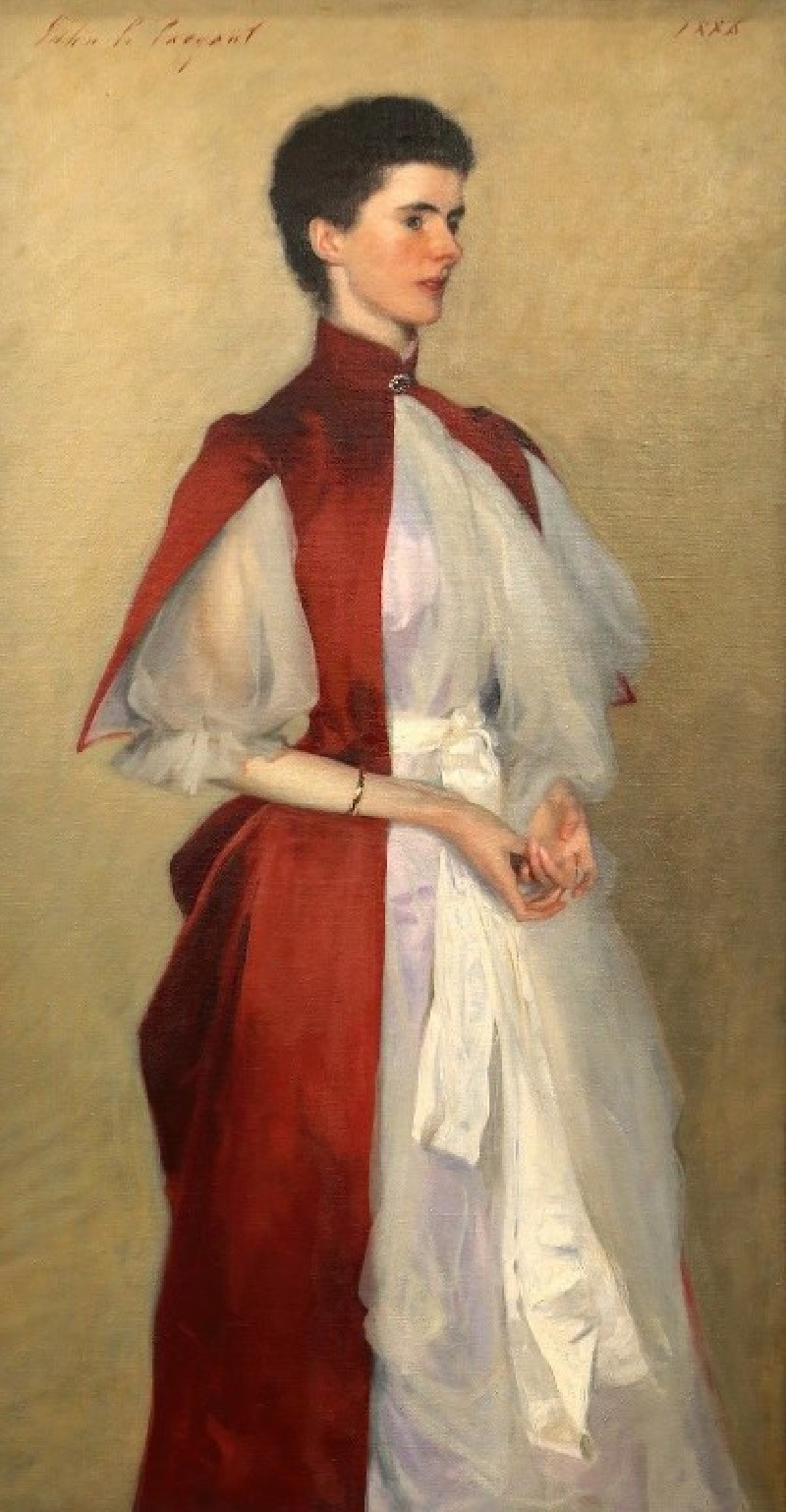Rocks above the Brook (1920–1929)
Technique: Giclée quality print
Recommended by our customers
More about this artwork
"Rocks above the Brook" is a captivating watercolor painting created by Ľudovít Čordák, a notable artist whose works often highlighted the serene and picturesque landscapes of Slovakia between 1920 and 1929. This particular painting stands out for its intricate detail and vibrant color palette, capturing the elemental beauty of nature in Čordák's distinctive style.The painting depicts a dynamic scene of a rocky gorge, where immense, rugged cliffs frame the composition on either side. On the left, a towering, steep rock face dominates the view, its surface marked by subtle textures and shades of gray, hinting at its weather-beaten history. The cliff on the right recedes into the distance, bathed in sunlight, with hints of amber and ochre that suggest the changing colors of autumn leaves. These warm tones contrast strikingly with the cool, shadowed rock on the left, creating a vivid visual interplay.In the heart of the gorge, a gentle brook winds its way through, reflecting the sky and flanked by verdant patches of greenery and small bushes that add bursts of color to the predominantly earthen scene. The presence of the water brings a sense of calmness and continuity, guiding the viewer’s eye through the rocky landscape and beyond.What is particularly striking in Čordák's work is his ability to convey texture and natural light, lending a three-dimensional quality to the cliffs and a sparkling clarity to the flowing water. The viewer can almost hear the whisper of the brook and the rustle of leaves in the breeze, making "Rocks above the Brook" not just a visual experience but a sensory journey into the heart of nature’s untouched splendor.
Delivery
Returns
Ludwig Deutsch was an Austrian painter who settled in Paris and became a noted Orientalist artist.
Details of Ludwig Deutsch's life are obscure. He was born in Vienna in 1855 into a well-established Jewish family. His father Ignaz Deutsch was a financier at the Austrian court. He studied at the Vienna Academy of Fine Arts 1872–1875, then, in 1878, moved to Paris where he became strongly associated with Orientalism.


